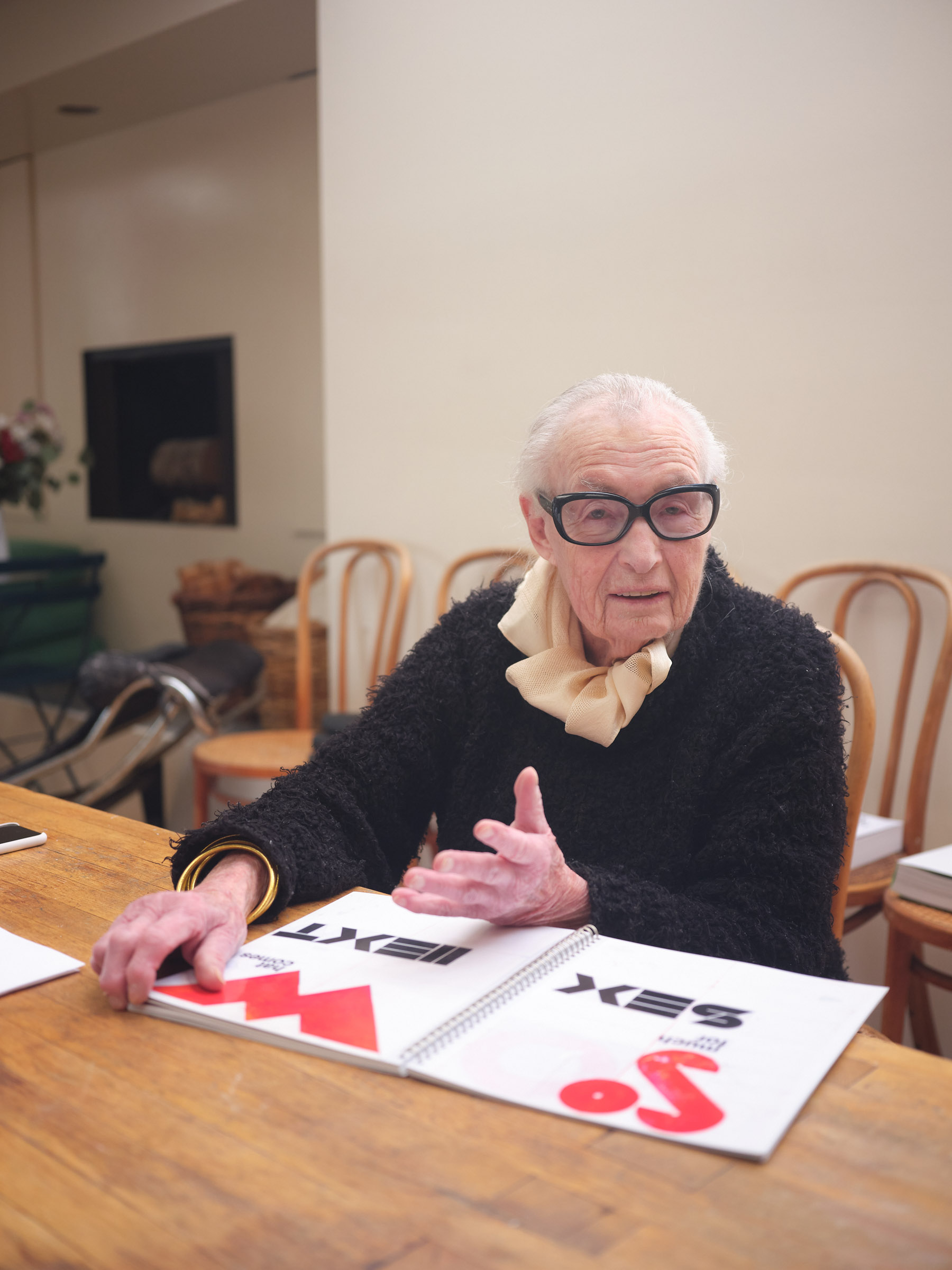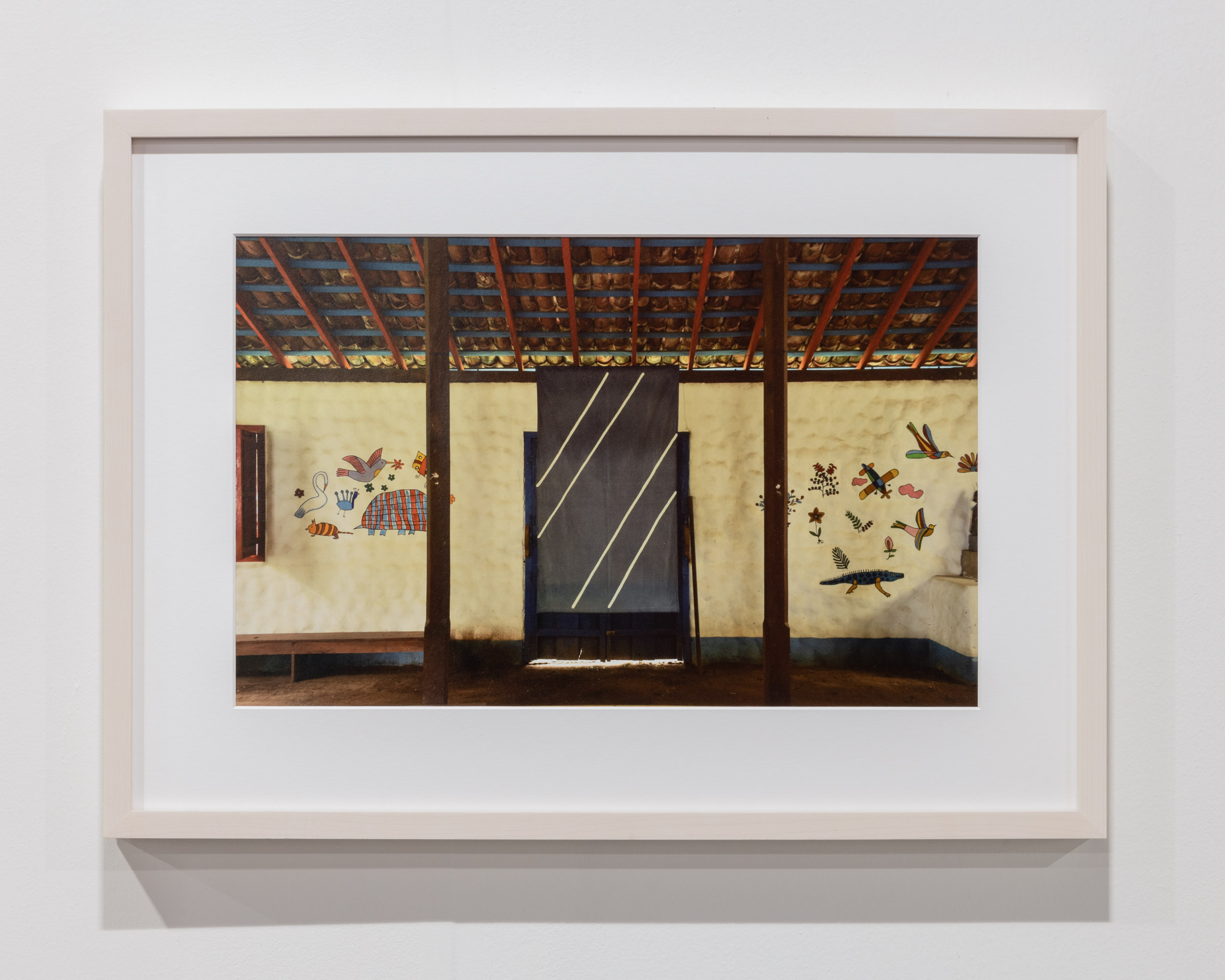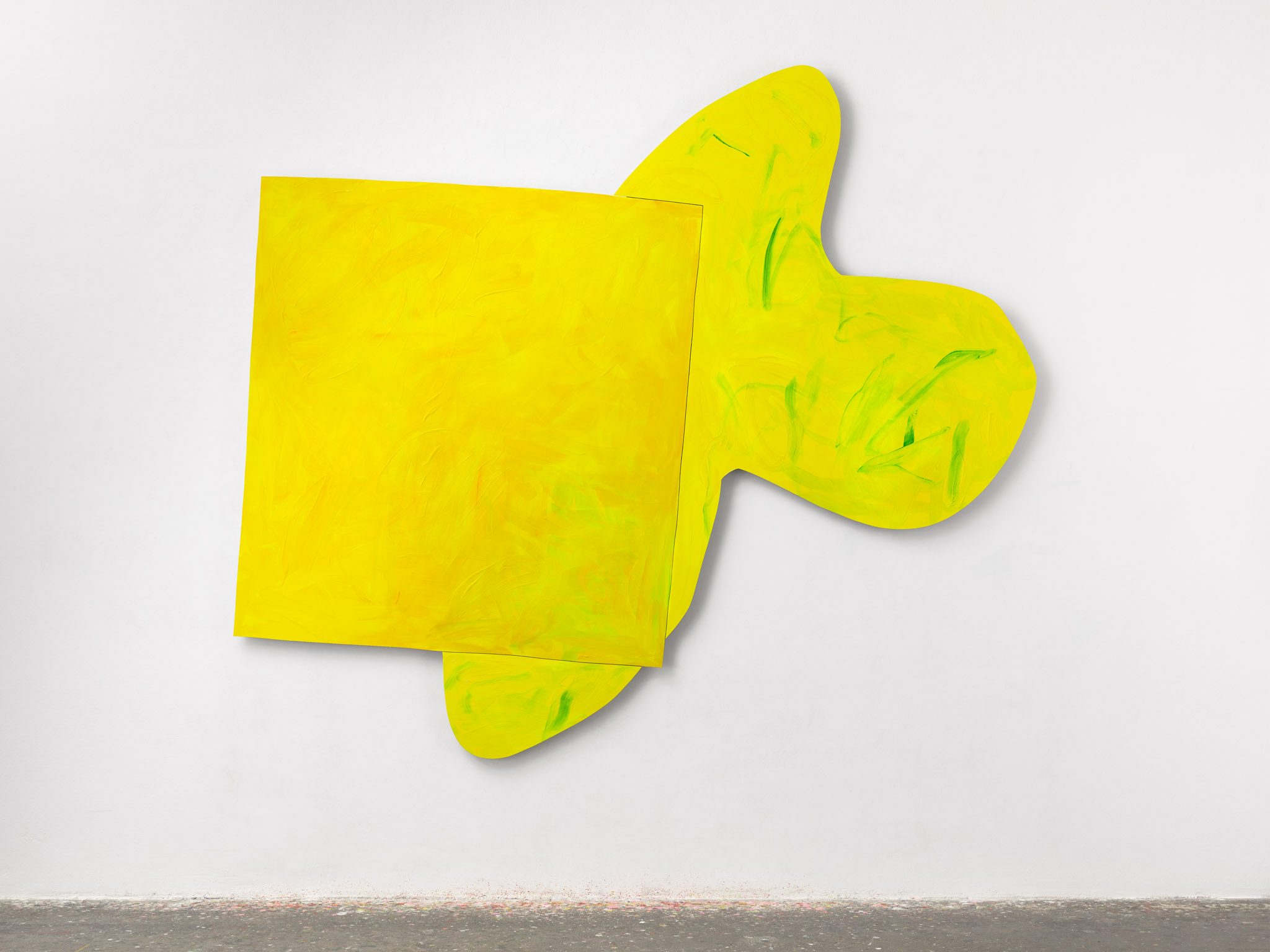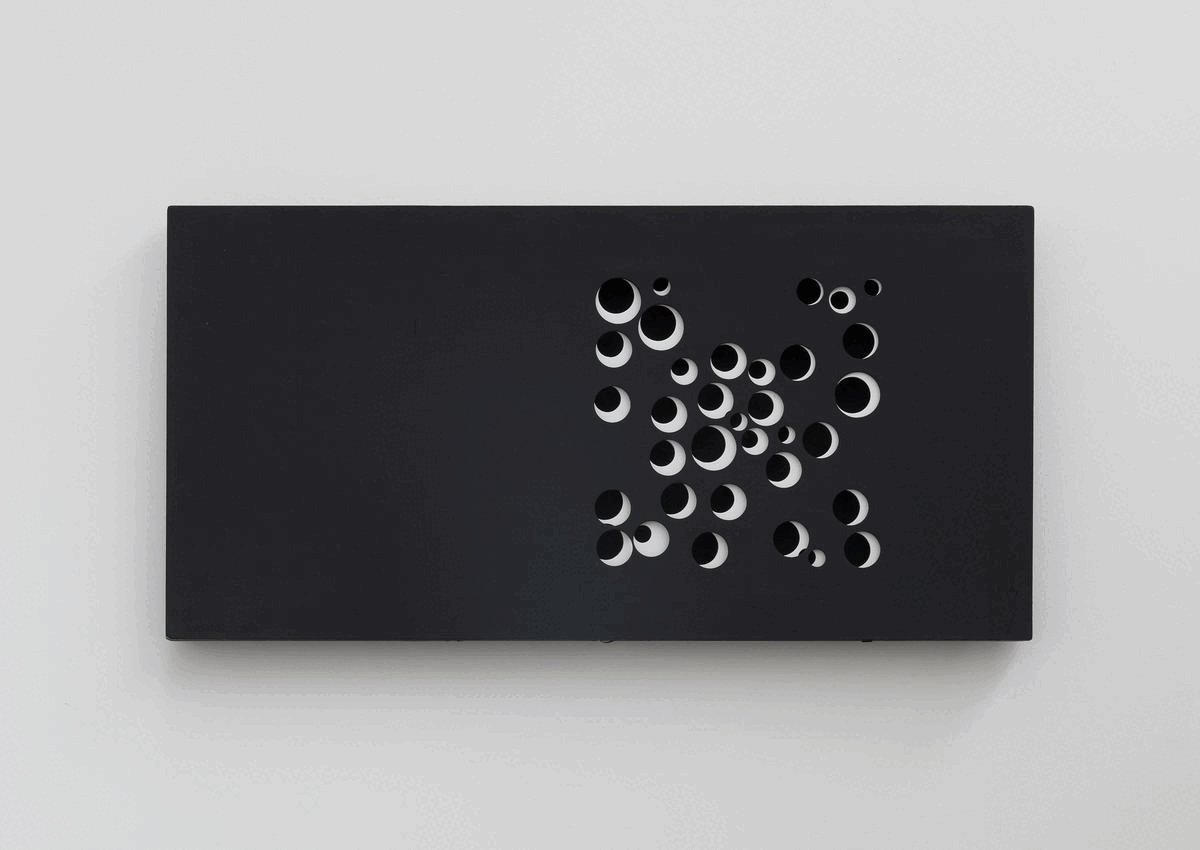The Pioneer: Barbara Stauffacher Solomon

Matylda Krzykowski introduces the nonagenarian artist, graphic and landscape designer, and writer – the subject of a new exhibition in Basel
‘I’m interested in doing more work,’ says the 92-year old Barbara Stauffacher Solomon when she speaks about what she does. ‘If I would have been only an artist I wouldn’t have made a living. In museum shows they did not pay me a penny for my artwork, but they did pay me for designing their flyers and catalogues.’
Barbara Stauffacher Solomon was a dancer and painter first; a historian, philosopher and landscape architect second. After studying graphic design at Schule für Gestaltung Basel with Armin Hofmann in the late 1950s, she started painting giant ‘Supergraphics‘ on large white walls – one wall telling her what to paint on the next wall, the wall across the room, the ceiling, and so on. Empty structures become big white canvases, butted up against each other. ‘Make a clean solution. Make a clean situation,’ she recalls Armin Hofmann would say. ‘Making visual propaganda was everything to him.’
In the 1980s, Solomon became obsessed with small 8 1/2”x11” sheets of paper: Playing on a page in the bright white light of San Francisco, on her white walls, on her long work table, stands a tall pile of pure white, 8 1/2”x11” sheets of paper offering limitless opportunities. On these, she draws lines, type lines, and collage lines, lies and land(e)scapes on 8 1/2”x11” pieces of paper, the next, and the next. Everyone’s public history, the one we think we know, and her private story.

Photo by Chris Grunder

Heaven Sent Helvetica, 2011
Mixed media on paper
27.9 x 21.6 cm
What is the source of this obsession? Working in this way, Solomon explains, was a way to maintain order in the family home: it kept the family’s ‘700 sq.ft. duplex in San Francisco from being dirty when living, working, cooking dinners for my husband and raising two daughters’.
What is the result of this obsession? ‘Drawings from my drawing board. Pages of text printed from my computer. Lots of cutting and pasting,’ Solomon explains. From this, she made books that are Art: from Green Architecture & The Agrarian Garden (1988) to Good Mourning California (1992) and Why?WhyNot? (2013) to DITTO (2021).’ While Stauffacher Solomon works on each book, she lines-up 8 1/2”x11” pieces of paper into lines of pages on her white walls so she can see all the pages in one glance, figuring out what she is doing; reading the walls (see header image).
In the 1990s when she participated in the group exhibition Visionary San Francisco, Stauffacher Solomon painted a series of 12 Ping Pong paintings titled This Is Not A Ping Pong Table (1990), the size of ping pong tables, using the table’s green rectangle to evoke the form of parks, gardens, parking lots and public squares. Critics declared her contribution one of the best architectural responses on the ‘dialectic between the street grid of San Francisco and the concept of play between the idea of urbanity and the arcadia that it has always represented’. Solomon’s decision to work with oil on canvas aimed to sought to provoke questions about how art is valued:‘If I had done it on paper,‘ she explains, nobody would pay any attention, but because I did it with oil paint on canvas like I was trained to do, then it makes it art. That’s just kind of a joke on painting and museums’.
The exhibition title GROP is an acronym for Green Rectangles of Paradise. The name is taken from one of Solomon‘s 8 1/2”x11”drawings from 1982, which consisted of a green rectangular garden and a road towards two giant breasts with stiff nipples. The piece is the embodiment of ‘California dreamin’: private properties, endless roads and sex. The work What price Liberty? (1991) depicts the statue of liberty standing on a green American Express card. We are in New York and on the other side of the United States of America, where the price is higher for personal dreams.

Green Rectangle of Paradise (69), ca. 1980
Goauche, Colored pencil, graphite
27.9 x 21.6 cm

What price Liberty?, 1991
Photocollage, colored pencil, and rubber cement
27.9 x 21.6 cm
For Visionary San Francisco (1990) and her solo show I Broke All The Rules at Palm Springs Museum (2019), Stauffacher Solomon placed ping pong tables into the exhibition space for the audience to play on. For GROP at von Bartha, one ping pong table in the gallery provides space for play but turns into an artwork again via the table surface painting Alas, Her Pink Ass Asked for Grass (2020). Discussing this work, Solomon says: ‘A ping pong table is real. You can buy it anywhere. But you do not get a ping pong painting in a shop.’
The large four vermilion coloured letters GROP in the gallery are from Barbara Stauffacher Solomon’s BSS Alphabet (2019). GROP is a four-letter word. It has meaning, but there’s also a form to it. What Stauffacher Solomon does naturally is elevate typography into art.
Matylda Krzykowski: Bobbie, we need a name for your alphabet.
Barbara Stauffacher Solomon: Hm…call it Bobbie’s alphabet. Everybody I know, knows it is mine.
MK: But every font has a name Arial, Helvetica, Comic Sans.
BSS: I don’t have a name for it. We can call it the BSS Alphabet.
MK: BSS. That’s perfect.
BSS: Call it the BSS Alphabet. Because that’s it. Bullshit by Bobbie. Perfect.
For her second book Good Mourning California (1992) she made Design for Garden (1991) where the dollar bill has a white axis down the middle, which transforms it into garden. ‘It cost a fortune to plan a garden but having a dollar bill cut down the middle with an axis makes it a cheap French garden’.
Today, 30 years later, Staufacher Solomon uses copies of one dollar and 50 Swiss Franc bills and pastes pink asses onto them in the series Alas, the Pink Ass Asked for Cash. ‘Sometimes I make the dollars into a garden but with various ways of interpretation.’ Stauffacher Solomon didn’t make the 50 Swiss Franc bill into a garden, instead she pasted a pink heart shaped ass on it. ‘Hopefully, the invisible becomes visible and the ordinary becomes extraordinary. I will keep doing it. Covering small areas with lots of content.’
Matylda Krzykowski plans, design, writes and talks about physical and digital space. Her transdisciplinary, geographically mobile practice resonates worldwide in form of exhibitions, installations, talks, performances and exhibits, amongst others. Recently she co-curated Total Space, an exhibition at Museum für Gestaltung Zürich.
- Meet Barbara Stauffacher Solomon and Matylda Krzykowsi at our upcoming Stefan’s Salon, March 30.
Stay tuned for more information on our social media channels or sign up for our newsletter. - Header image: Studio Visits, photo by Matylda Krzykowski, March 2019
Error. No content found for Slider





